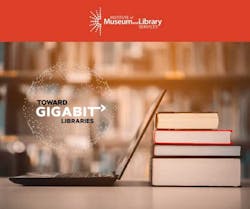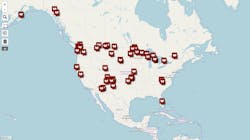Internet2 wins grant to support broadband for Indigenous community libraries
Internet2 was awarded a two-year $249,994 Institute of Museum and Library Services (IMLS) grant to raise the broadband and digital bar for Indigenous community libraries.
Funded through the Laura Bush 21st Century Library Program, the grant will enable the Internet2 Community Anchor Program to work closely with these libraries to scale the adoption of the Toward Gigabit Libraries toolkit.
Made possible through the Institute of Museum and Library Services grants, the Toward Gigabit Libraries toolkit is designed to drive digital transformation within libraries.
Library staff can use the toolkit to better serve their communities by enhancing broadband connectivity, expanding access to internet-enabled devices, and building digital skills.
Bridging the connectivity gap
A vital benefit of this funding is to bridge the connectivity gap in tribal communities.
According to a 2021 U.S. Census Bureau American Community Survey, while 90% of households nationwide had broadband internet, only 84% of American Indian, Alaska Native, and Native Hawaiian households in Tribal areas were connected. On Tribal lands specifically, this access dropped to just 71% of households.
But connectivity is only one part of the problem Internet2 will help solve.
Libraries can facilitate improved access to education, health, and economic information and opportunities by helping to bridge the digital divide in their communities.
"The availability of the Toward Gigabit Libraries toolkit will truly benefit Native American libraries and will help support opportunities for access to digital collections, e-government services, distance learning, and other essential community services that libraries provide," said Susan Feller, president and CEO of the Association of Tribal Archives, Libraries, and Museums.
Overcoming barriers
To overcome the barriers to good connectivity and learning digital skills, tribal communities must overcome various obstacles.
Alaska Native, Native Hawaiian, and Tribal libraries face unique challenges in improving digital equity, including geographic remoteness and limited telecommunications infrastructure.
Also, resource gaps and local technical expertise can hinder efforts to address these issues effectively. These barriers reinforce disparities, restricting access to essential services, education, healthcare, employment opportunities, and other opportunities to participate in a digital society.
"A network of Tribal network builders creates a stronger Indian Country as it solves its own communications deficits in their respective communities," said Matthew Rantanen, director of technology for the Southern California Tribal Chairmen's Association, director of the Tribal Digital Village Network/Initiative, vice president of Tribal Broadband at GoldenStateNet, and co-founder of the Tribal Broadband Bootcamp.
The project will offer free and accessible technology training for library staff, enabling them to understand better, fund, and improve their library technology and broadband resources. It will also assist them in harnessing infrastructure and E-Rate funding options now available to Tribal libraries.
Since it was initially funded in 2015 and expanded in 2020 through previous IMLS grants, the Toward Gigabit Libraries program has been helpful for libraries in assessing and improving their broadband infrastructure and IT environments.
For related articles, visit the Broadband Topic Center.
For more information on high-speed transmission systems and suppliers, visit the Lightwave Buyer’s Guide.
To stay abreast of fiber network deployments, subscribe to Lightwave’s Service Providers and Datacom/Data Center newsletters.


